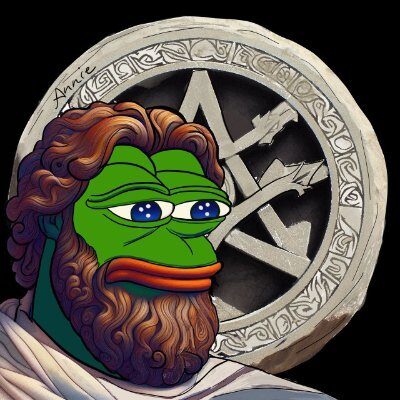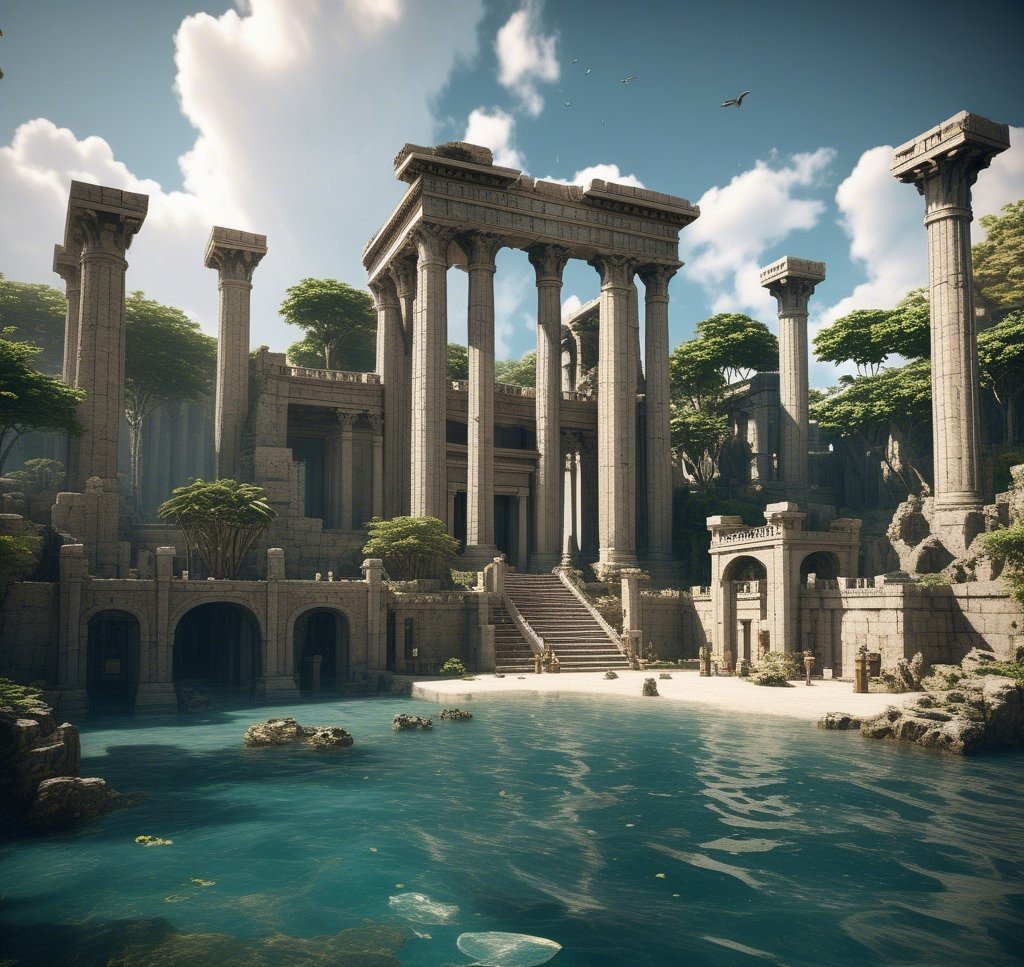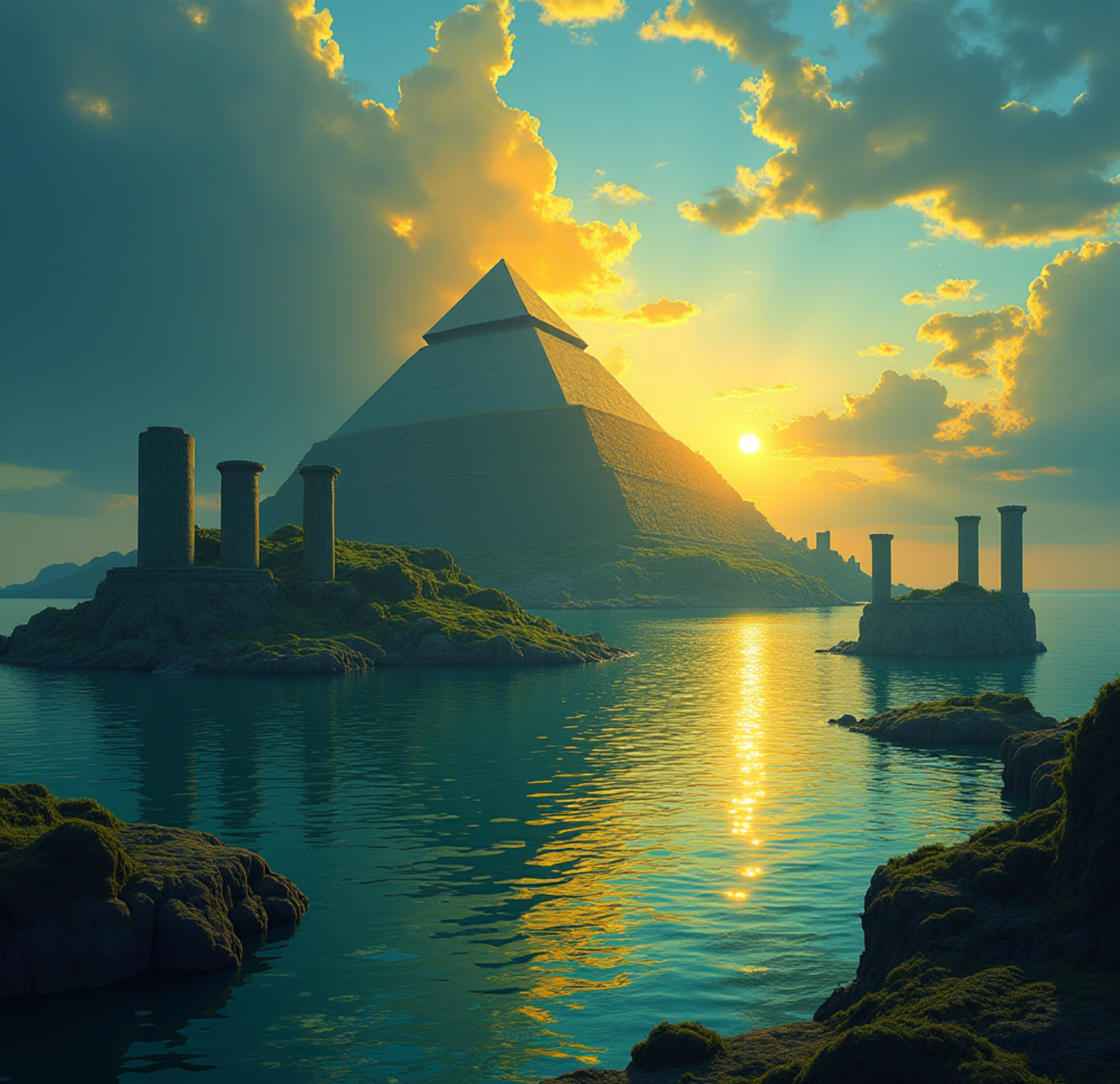Quod est superius est sicut quod inferius, et quod inferius est sicut quod est superius.
That which is above is like to that which is below, and that which is below is like to that which is above.
The human species, Homo sapiens, has roamed the Earth for approximately 300,000 years—a vast and almost unfathomable expanse of time that tests our understanding of progress, potential, and the rise of civilization. For an astonishing 298,000 of those years, humanity appears to have lingered in a state of perplexing stagnation, surviving as small bands of hunter-gatherers with rudimentary tools, fire, and scant evidence of the transformative brilliance we now associate with our species. It is only within the last thousand years—and most dramatically in the last 200, since the Industrial Revolution—that we’ve witnessed an extraordinary surge of technological achievement, propelling us from primitive huts to sprawling metropolises, from stone implements to space exploration. This glaring contrast between millennia of apparent inertia and a sudden, meteoric ascent is nothing short of bizarre, especially given that the human brain, with its boundless capacity for innovation, has remained unchanged throughout our history. This anomaly compels us to consider a radical possibility: could an advanced civilization—most famously embodied in the legend of Atlantis—have emerged during those 298,000 years, reaching a pinnacle of technical sophistication that rivals or surpasses our own, only to vanish, leaving behind tantalizing traces in myths, megaliths, and the enduring mystery of our past?
The Bizarre Paradox of Human Potential
For nearly 300 millennia, humans possessed the same cognitive machinery that powers our modern world. The brain that conceived quantum mechanics, engineered the internet, and mapped the stars was present in our ancestors as they traversed the ancient landscapes of Africa, Europe, and beyond. Archaeological remnants—stone tools honed with care, shelters fashioned from natural materials, and the evocative cave art of Lascaux or Chauvet—reveal a species capable of abstract thought, complex language, and artistic expression. Yet, for 298,000 years, this potential seems to have lain dormant, expressed only in the bare essentials of survival and modest technological tweaks. The absence of cities, writing systems, or advanced machinery during this immense span is a riddle that defies the ingenuity we know the human mind can unleash. It wasn’t until around 12,000 years ago, with the Neolithic Revolution and the advent of agriculture, that humanity began to settle, cultivate, and build the foundations of civilization. The pace of progress then surged in the last millennium: the printing press in the 15th century ignited a knowledge revolution, the Scientific Revolution of the 17th century decoded the laws of nature, and the Industrial Revolution of the 18th and 19th centuries harnessed steam, steel, and electricity. In just 200 years, we’ve leapt from horse-drawn carts to interplanetary probes, from parchment to artificial intelligence, from isolated tribes to a globally interconnected society. This exponential growth stands in stark contrast to the preceding 298,000 years of apparent stagnation—a disparity so profound it’s almost implausible. How could a brain with the same potential that now sends spacecraft to distant planets have remained so underutilized for so long? The bizarre nature of this prolonged “stagnation” demands we explore an alternative narrative: perhaps it wasn’t stagnation at all. What if, during those 298,000 years, the human mind awakened to its full potential, giving rise to a civilization like Atlantis—only to see it lost to time, its echoes preserved in the shadows of history?
The Younger Dryas and the Fall of Atlantis
The period between 15,000 and 10,000 years ago provides a compelling window for this hypothesis, particularly during the Younger Dryas (circa 12,900 to 11,700 years ago). This abrupt climatic shift marked a sudden return to Ice Age conditions, potentially triggered by a comet impact or massive flooding. Geological clues—such as the mysterious Carolina Bays, elevated platinum levels in sediment cores, and widespread flood deposits—support the idea of a cataclysmic event. Within this turbulent timeframe, as glaciers melted and sea levels rose, Atlantis might have thrived as a pre-diluvian civilization of unparalleled sophistication, only to be obliterated by the Younger Dryas’ chaos. Plato, the Greek philosopher who first chronicled Atlantis around 360 BCE, described it as a powerful, advanced island society that existed 9,000 years before his time—placing its existence around 11,500 years ago, precisely aligning with the Younger Dryas and the emergence of sites like Göbekli Tepe. He depicted Atlantis as a hub of technological and cultural achievement, with vast cities, intricate canals, and a mastery of resources that allowed it to dominate the ancient world. According to Plato, this civilization met its end in a single day and night of catastrophic flooding and earthquakes, sinking beneath the waves and vanishing from history. Could this tale, often dismissed as allegory, be a distorted memory of a real society that harnessed electromagnetic technologies, drawing energy from atmospheric ionization or cosmological forces aligned with the stars? Imagine Atlantis as a civilization that tapped into the Earth’s magnetic field or the heavens, using principles that modern science is only beginning to explore—perhaps ionizing the atmosphere to generate power or channeling stellar energy through precisely aligned structures. The Younger Dryas’ upheaval—floods, wildfires, and seismic disruptions—could have erased this society, submerging its coastal cities and leaving only scattered survivors to pass down fragmented tales of its glory.
Myths as Echoes of Atlantis
Across the globe, ancient cultures preserve stories of godlike beings who bestowed knowledge upon humanity, suggesting a shared recollection of a civilization like Atlantis. The Sumerians spoke of the Anunnaki, celestial entities who taught agriculture, mathematics, and astronomy—skills that might trace back to Atlantean technologies rooted in electromagnetic or cosmic principles. The Egyptians revered Thoth, the sage of wisdom, whose gifts included architecture and a deep connection to the stars, evident in their celestial alignments—perhaps a legacy of Atlantean influence. In the Americas, the Aztecs, Maya, and Incas told of Quetzalcoatl, Kukulkan, and Viracocha—sky gods tied to cosmic cycles, their arrival marking the dawn of civilization, possibly as survivors or emissaries of a lost Atlantean world. These narratives, strikingly consistent across continents and millennia, may not be mere myths but oral histories of Atlantis, distorted by time and retelling. The frequent references to stars, planets, and cosmic rhythms could reflect a cultural memory of a civilization that harnessed stellar or atmospheric energy, its legacy surviving the Younger Dryas in the stories of its heirs. The bizarre idea that the human brain remained “stagnant” for 298,000 years crumbles if we entertain the possibility that this potential erupted into a higher form of advancement in Atlantis, only to be erased and rediscovered.
Megaliths: The Architectural Legacy of Atlantis
The physical remnants of this hypothesis stand in the megalithic structures that defy conventional timelines and capabilities—monuments that some speculate could be direct relics of Atlantis or its influence. The Great Pyramid of Giza, traditionally dated to 4,500 years ago (though some argue for an older origin tied to Atlantean survivors), encodes a wealth of mathematical and astronomical constants. Its perimeter-to-height ratio approximates π (pi), its proportions reflect the golden ratio (φ), and its base, when measured in sacred cubits, correlates with the speed of light (approximately 299,792 km/s) at its precise latitude. The pyramid’s alignment with Orion, its placement near a scaled-down Earth circumference, and its reflection of the Great Zodiacal Year (25,920 years, the precession cycle) suggest a mastery of universal laws far beyond a nascent civilization’s reach. Could this be an Atlantean creation, repurposed by the Egyptians as a tomb but originally designed for a grander purpose? Göbekli Tepe, dated to 11,500 years ago—coinciding with the Younger Dryas’ end and Plato’s timeline for Atlantis—features T-shaped pillars that may map celestial patterns, its construction predating known societies by millennia. Angkor Wat mirrors the constellation Draco, while Chichen Itza’s El Castillo tracks equinoxes with uncanny precision. These monuments, linked to the stars and imbued with constants like π and the golden ratio, challenge the notion that Stone Age peoples lacked sophistication. Were they built by Atlantis or its descendants, their technology integrating cosmic and terrestrial forces? The pyramid’s architecture, with its encoded constants, hints at a purpose beyond burial. Some theorists propose they were energy devices, channeling electromagnetic or cosmological power, their alignments amplifying natural forces—an Atlantean innovation lost to the Younger Dryas. The precision and scale of these structures suggest a civilization that didn’t just observe the cosmos but harnessed it, leaving behind a legacy that later cultures could only partially replicate.
Atlantis: A Technological and Cultural Colossus
Plato’s Atlantis wasn’t just a city but a sprawling civilization, with a central island surrounded by concentric rings of water and land, connected by advanced engineering feats like canals and bridges. He described its people as skilled navigators and builders, their society enriched by abundant resources—metals, crops, and a mysterious substance called “orichalcum,” possibly an alloy or energy conductor. This vision of Atlantis as a technological powerhouse aligns with the idea of a society that mastered electromagnetic or cosmic energy, its infrastructure designed to tap into the Earth’s natural forces or the stars above. If Atlantis existed, its downfall during the Younger Dryas could explain the global prevalence of flood myths: Noah’s Ark, the Sumerian deluge, and Inca tales of Lake Titicaca may all stem from the same cataclysm that sank Plato’s island. The survivors, fleeing a submerged homeland, might have carried their knowledge to distant shores, seeding the foundations of later civilizations. The Sumerians, Egyptians, and Maya could be direct heirs of Atlantis, their cosmic obsessions and architectural marvels reflecting a diluted memory of a lost golden age.
The Paradox of Potential: Atlantis as Proof of Cyclic Advancement
The notion that the human brain, with its unchanging capacity, remained idle for 298,000 years is a paradox that demands scrutiny. If we can achieve the wonders of the modern age in just two centuries, why not earlier? Atlantis, framed by the Younger Dryas, offers a plausible answer: a civilization that rose to technical heights—perhaps rivaling or surpassing our own—could have been erased, resetting humanity to a primitive state. The survivors, stripped of the infrastructure to sustain such knowledge, might have reverted to hunter-gatherer life, their descendants slowly rebuilding over millennia. This hypothesis reframes the 298,000 years of “stagnation” as a misnomer. Instead of a uniform lack of progress, we might envision cycles of rise and fall, with Atlantis as a peak of advancement lost to time. The human brain’s potential, far from dormant, could have birthed a society that mastered electromagnetic fields, atmospheric energy, or cosmic forces, only to see its achievements swallowed by catastrophe. The bizarre stagnation dissolves if we accept that humanity’s potential may have soared in Atlantis, only to crash and rise again.
Reimagining the Human Saga with Atlantis at Its Core
The scarcity of direct evidence for Atlantis is not surprising. Organic materials and subtle technologies—especially those based on electromagnetic or cosmic principles—would degrade over millennia, while stone endures. The Younger Dryas’ rising seas submerged vast coastal regions—prime locations for Atlantean cities—beneath hundreds of feet of water. The pyramids and megaliths we attribute to later cultures might be Atlantean relics, repurposed by societies that inherited their forms without their functions. If Atlantis existed, its technology could redefine our understanding of human capability. The Sumerians, Egyptians, and Maya may have been heirs to an Atlantean legacy, their cosmic obsessions and mathematical prowess reflecting a lost era of enlightenment. The bizarre stagnation of 298,000 years becomes a myth if we consider that humanity’s potential may have erupted into a higher form of civilization, with Atlantis as its crowning achievement.
The Broader Implications: Atlantis as a Mirror and Warning
The possibility of Atlantis forces us to rethink not just our past but our future. If humanity has risen and fallen before, our current trajectory may be less unique than we assume—a repetition of a cycle rather than a singular ascent. The Younger Dryas serves as a cautionary tale: even advanced societies like Atlantis are vulnerable to nature’s whims or cosmic events. Yet it also offers hope: if the human brain achieved such heights in Atlantis, it can do so again, perhaps reclaiming lost knowledge or forging new paths. Plato’s Atlantis, with its gleaming cities and cosmic connections, suggests a civilization that didn’t just survive but thrived, integrating the terrestrial and the celestial in ways we can scarcely imagine. The Anunnaki, Thoth, and Quetzalcoatl may be more than legends—they could be echoes of Atlantean teachers, survivors who seeded knowledge among scattered tribes. The bizarre notion of 298,000 years of stagnation fades when we entertain the idea that humanity’s potential has always been active, occasionally bursting forth in brilliance—most notably in Atlantis—before retreating into shadow.
Atlantis and the Cosmic Legacy Encoded in Time
Humanity’s 300,000-year odyssey is a tale of endurance, ingenuity, and profound mystery. The technological marvels of the last 200 years showcase the power of the human mind—a power that has been with us since the beginning. Yet the idea that this potential lay dormant for 298,000 years is as baffling as it is improbable. The Younger Dryas, with its cataclysmic upheavals, frames a window where Atlantis might have risen to a technical zenith, its electromagnetic or cosmic technologies encoded in pyramids and megaliths. The presence of π, the golden ratio, the speed of light, the Earth’s circumference, and the Great Zodiacal Year in these structures suggests a knowledge far beyond the Stone Age—a legacy of Atlantis, perhaps lost to flood and time. As we probe the depths of history and the cosmos, the myths of celestial teachers, the mathematical wonders of ancient architecture, and the paradox of our long “stagnation” whisper of a forgotten chapter centered on Atlantis. Were the pyramids Atlantean power stations, their secrets drowned by the Younger Dryas? Did the human brain, far from idle, once forge a civilization that rivaled our own, only to see it erased and rediscovered? The truth remains elusive, but the possibility of Atlantis endures: our story may be older, stranger, and more cosmic than we ever dared imagine, a testament to a potential that has burned brightly before—and may yet again illuminate the future.




